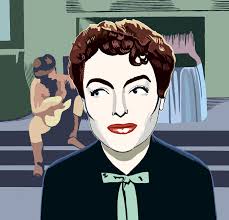Enter now to win a copy of
Cowboys, Creatures and Classics: The Story of Republic Pictures

In the beginning, long before computer-generated imagery, there were the Lydecker brothers. Using detailed miniatures, scale model vehicles, creative lighting, and camera techniques, the special effects duo revolutionized the moviemaking business and made Republic Pictures a force to reckon with in the film industry. The Lydeckers followed in their father’s footsteps. Howard C. Lydecker worked specifically for actor Douglas Fairbanks and was an early practitioner in special effects, including the filming of miniatures and trick photography. Theodore was born in Englewood, New Jersey, in 1908. Howard, also known as “Babe,” was born in Havana, Cuba, in 1911.
Theodore and Howard were enamored with the film business and went to work developing their behind the camera artistry in the mid-1930s. Prior to being hired at Republic Studios, the pair worked for a succession of studios including Columbia, Fox, and Mascot. When Herbert Yates acquired Mascot in 1935, the Lydecker brothers were part of the package. The siblings worked under John Coyle learning all they could about force perspective and visual effects. When Coyle left Republic in 1938, Howard and Theodore assumed leadership of the special effects department.
According to a 1942 memo from studio head Herbert Yates, the brothers were responsible for nine optical effects areas: montages; inserts; some main titles; added shots; construction of all props for process shots; the gun room; matte and glass shots; special effects including fire, water, rain, snow, smoke, and underwater setups; and miniatures. It was in the creation of miniatures that the Lydeckers excelled.
Howard and Theodore worked together on conceptualizing the small scale sets. Theodore would then draft the plans for the building and oversee the construction. Howard’s job was to film the miniature models of towns, spaceships, buildings, trains, automobiles, stagecoaches, and whatever else a script might call for. In a short time, the Lydeckers earned the reputation as the kings of special effects. The approach they took when preparing for a sequence was simple: build large, photograph the subject matter from every possible angle, and always use natural light.
In addition to using detailed models and filming sequences with the miniatures against real location backdrops, Howard Lydecker shot the scenes in slow motion. He realized that during such shoots, film ran through the camera at a higher speed than normal (determined by the scale of the models) and when projected at normal speed, the slow-motion effect gave the end product the right appearance of mass and size. Utilizing all the techniques the Lydecker brothers developed and subsequently perfected, the visual effects on the movies Republic Pictures produced were superior to that of any other studio.
The majority of the time, the special effects geniuses had a small budget to work with and that forced them to be creative. In the case of the first Republic serial Darkest Africa, the Lydeckers were tasked with creating an army of batmen that would fly in and terrorize the heroes in the story. Other studios would have been content to build small models and dangle them on the end of a thread and shoot against jiggly rear-screen footage. Howard and Theodore built more than two dozen clay and rubber figurines, each 3.25 inches long with wing spans of six inches. They suspended the figurines on a rigger and rotated them above miniature sets representing the backdrop in the script. For close-ups of the life-sized batmen flying through the air, they sculptured a hollow shell body from papier-mâché. Sheaves were then placed in the reinforced heel and shoulder areas to allow the figurines to slide gracefully along a pair of stretched wires.

To learn more about the many films Republic Pictures produced read
Cowboys, Creatures and Classics: The Story of Republic Pictures

